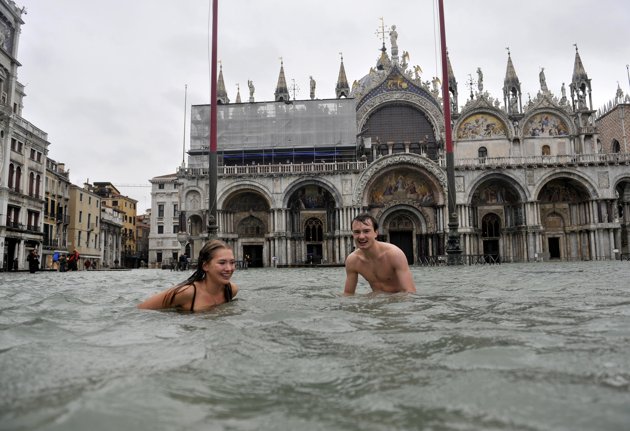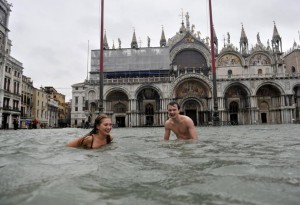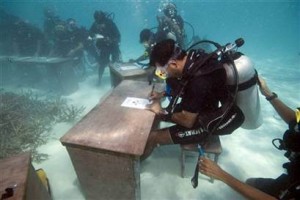
16 Nov EARTH MATTERS: CLIMATE CHANGE EVENTS
I usually leave climate change to my co-columnist, Billy Mason. His expertise in the subject way exceeds mine. But I make an exception for the specific subjects of flooding and sea level rise. Not only are those related to my current bailiwick, it’s also a hugely pressing issue as Hurricane Sandy made clear as it passed through the Caribbean and U.S. East Coast.
Sandy isn’t the only warning sign, though. The former President of the Maldives, Mohammed Nasheed, has been talking about climate change and sea level rise for years, and the “Small Island Developing States” (SIDS) have highlighted sea level rise as one of the most pressing issues facing their nations. (See http://www.sidsnet.org/climate-change-and-sea-level-rise for a discussion of how climate change is affecting small island nations.)
But his is not just a problem for developing countries. As if Sandy didn’t make that clear enough, more recently, Venice experienced one of the highest “high water” (aqua alta) events in recorded history. Guests took to swimming in St Mark’s Place and had to carry their roller bags above their heads as they sloshed through waist-deep water. Aqua alta is a regular occurrence during high tides – but this was aqua altissima.
So what can we do?
It’s going to take a combination of mitigation and adaptation, as Billy has discussed before.
We have to reduce carbon emissions, and it seems as if, in the wake of Sandy, that may finally be on the political agenda after a decade of climate change skepticism. In recent days, even “drown government in the bathtub” anti-tax crusader Grover Norquist entertained the idea of carbon taxes (with offsets) – although he quickly reversed himself on the issue in response to pressure from the American Energy Alliance. (See the story at http://thinkprogress.org/climate/2012/11/13/1182511/grover-norquist-abruptly-reverses-position-on-carbon-tax-after-facing-criticism-from-koch-backed-group/.)
And in addition to addressing greenhouse gasses, particularly carbon and methane, we’re going to have to prepare for more violent storms and for rising sea levels.
My last blog was about how oyster restoration can mitigate floods and storm surges. Oyster restoration, however, is not the only “green” or “soft” infrastructure solution to sea level rise, storms, and floods. Other techniques include wetland restoration, eelgrass planting, mangroves, and sand banks and berms.
Then there is just planning for change – not building in flood plains, storing sensitive files and electronics on higher levels, using extra-sturdy glass in storefronts, and raising buildings.
Some of these techniques, like building on raised piers, have been around for a long time. Others are being implemented in response to recent storms. There are things we can do to adapt, and we’re going to have to look at a whole range of solutions. Luckily there are some great ideas out there.
Check out some nifty concepts at the following sites:
Rising Currents at the Museum of Modern Art – Projects for NYC’s waterfronts
http://www.moma.org/explore/inside_out/category/rising-currents
Palisade Bay, NY/NJ project funded by the American Institute of Architects
http://www.palisadebay.org/Chapters/01%20Introduction_lr.pdf
Green Infrastructure projects in England
http://www.grabs-eu.org/downloads/NWDA_Framework_for_Action_March2011.pdf
Climate adaptation in the Dutch delta
http://www.pbl.nl/en/publications/2012/climate-adaptation-in-the-dutch-delta




Sorry, the comment form is closed at this time.